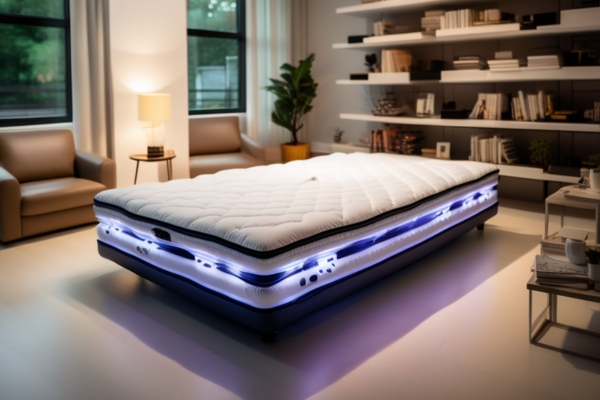Do Air Mattresses Use a Lot of Electricity?
Air mattresses: the trusty companions of camping adventures, sleepovers, and occasional guest room duty. But have you ever wondered about their hidden energy footprint?
Do these inflatable sleeping solutions guzzle electricity as readily as they devour air? Worry not, curious sleeper, for this deep dive into the world of air mattress electricity is here to illuminate the watts and amps behind your inflatable comfort.
Understanding Air Mattress Power Sources
Before delving into specific numbers, let’s establish the power pathways of air mattresses. Most models fall into two camps:
- Battery-powered: These air mattresses, often perfect for outdoor adventures, rely on internal batteries to inflate and maintain firmness. Their electricity usage depends on the battery type and runtime, potentially requiring replacements during extended use.
- Electric-powered: These plug-in air mattresses draw power from the grid. Their electricity consumption hinges on the pump’s wattage and how often it needs to top up the air.
Inflating and Maintaining: Where the Watts Go
Now, let’s explore the electricity usage during different air mattress phases:
- Initial Inflation: This is the energy-intensive phase, with the pump working at maximum capacity. Electric pumps typically range from 10 to 20 watts, meaning filling a standard air mattress might use around 0.02 to 0.04 kWh (kilowatt-hours). Battery-powered pumps rely on their stored energy, so it’s crucial to choose long-lasting batteries for extended use.
- Maintaining Firmness: This is where things get interesting. Once inflated, most air mattresses have built-in pressure sensors that activate the pump only when pressure drops. The frequency of these top-ups depends on factors like mattress size, material, and temperature. A high-quality, airtight mattress needs fewer top-ups, while larger models or those with less durable materials might require more frequent bursts of pump power.
- Advanced Features: Some air mattresses boast additional features like built-in heaters or wave settings. These can significantly increase electricity consumption, so consider your needs and usage before choosing a feature-rich model.
The Cost of Comfort: Putting Watts into Dollars
So, how much does this inflatable slumber actually cost? Let’s estimate using an average electric air mattress with a 15-watt pump. Assuming overnight use with 5 top-ups (a conservative estimate), the electricity cost would be around 0.0045 kWh.
In the US, with an average electricity rate of $0.13 per kWh, that translates to just under 0.6 cents per night! Even extended use and larger models likely won’t break the bank, though it’s always wise to be mindful of energy consumption.
Tips for a Greener Slumber: Optimizing Air Mattress Electricity Use
Want to minimize your air mattress’s environmental impact? Here are some tips:
- Choose wisely: Opt for high-quality, airtight mattresses that require fewer top-ups.
- Maintain pressure: Regularly check and adjust air pressure to avoid unnecessary pump activation.
- Unplug when not in use: Don’t leave the air mattress plugged in when deflated; many models continue to draw minimal power in standby mode.
- Embrace the outdoors: For camping trips, consider battery-powered options or solar-powered pumps.
Beyond Watts and Amps: Other Air Mattress Considerations
While electricity usage is important, remember it’s just one factor in choosing an air mattress. Consider other aspects like comfort, portability, durability, and features to find the perfect inflatable companion for your needs.
Conclusion: Powering Up for a Good Night’s Sleep
In the grand scheme of household energy consumption, air mattresses are practically energy sip-and-see-ers. By understanding their power draw and making informed choices, you can enjoy a comfortable slumber without worrying about draining your wallet or the planet. So, inflate away with confidence, knowing that your inflatable oasis uses less electricity than your morning toaster!

